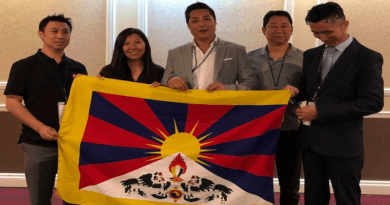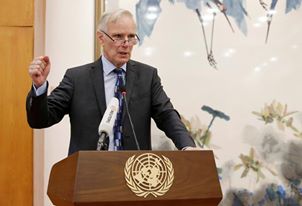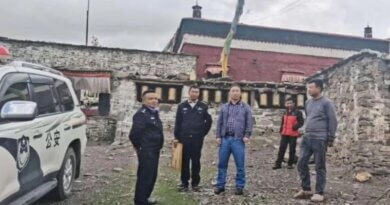Talks to be held next week over Ukraine crisis
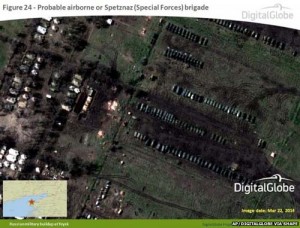
DHARAMSALA, April 11: Amid ever increasing possibility of military conflict between Russia and Ukraine that threatens to divide and plunge the world into cold war era, the United States, the European Union, Russia and Ukraine have agreed to meet for talks next week to resolve the security situation in eastern Ukraine peacefully.
It comes as hundreds of pro-Russian protestors continue to occupy government buildings and demand secession referendum in three eastern Ukrainian cities of Kharkiv, Donetsk and Luhansk since Sunday.
The meeting will involve US Secretary of State John Kerry, EU foreign policy chief Catherine Ashton, Russian Foreign Minister Sergei Lavrov and Ukraine’s Foreign Minister Andriy Deshchytsia.
It is the first four-way ministerial level meeting since the crisis began in November last year when the then pro-Russian Ukrainian President, Viktor Yanukovych rejected a trade agreement with EU, seeking closer ties with Moscow.
Yanukovych’s ouster from office in February after months of protests by pro-EU anti government protesters and the announcement of fresh presidential election triggered unrest in the South Ukrainian peninsula of Crimea by pro-Russian protesters which subsequently led to Crimean legislature to vote overwhelmingly in favour of joining Russia and secede from Ukraine in a referendum last month.
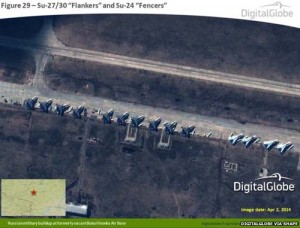
So far Ukrainian security forces, wary of warnings from Russia that military action will be taken if violence is used against pro-Russian protestors, have refrained from using force in the eastern cities of Kharkiv, Donetsk and Luhansk.
However, Ukrainian interim President Oleksandr Turchynov reiterated Tuesday that he would treat pro-Russian separatists who have seized and barricaded government buildings with tyres and razor wire as “terrorists” who will be prosecuted with the full force of the law.
Turchynov’s remarks came prior to a vote in the Ukrainian parliament on a bill outlawing individuals and groups calling for secession which resulted in 230 out of 450 law makers voting in favour of the bill.
Ukraine’s Interior Minister, Arsen Avakov on Wednesday further warned those occupying the government buildings to leave within 48 hours or face use of force, CNN reported April 9.
“I want to repeat that there are two options: political settlement through negotiations and the use of force,” CNN quoted Avakov as telling reporters. “We are ready for both options.”
The 48-hour ultimatum set by Avakov, analysts believe, might escalate the tensions in the country’s eastern region rather than end the crisis.
Fyodor Lukyanov, chairman of the Council for Foreign and Defence Policy, an association of leading political experts, warned in remarks on the Slon.ru online newspaper that even though Putin may prefer non-military means to achieve his goals, use of force in the east would likely trigger a Russian invasion.
“If Ukrainian special forces and law enforcement agencies move to violently suppress the demonstrations … Russia will have to pull into that,” he said.
Military build-up
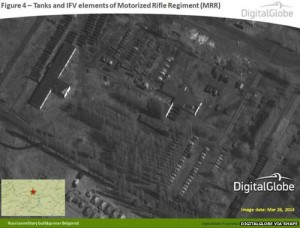
Several satellite images released by The Associated Press showed increased Russian military presence, including dozens of Russian tanks, other armored vehicles, combat jets and helicopter gunships stationed in areas along the Ukrainian border.
NATO which provided the images further said that around 35,000 to 40,000 troops have been deployed along the frontier and termed the developments “advanced combat readiness”, dismissing Russian foreign ministry’s claim on Wednesday that troops near Ukraine’s border posed no threat and the movements were nothing more than “everyday activity of Russian troops on its territory”.
“As I speak, some 40,000 Russian troops are massed along Ukraine’s borders,” the Nato secretary general, Anders Fogh Rasmussen said in Prague on Thursday. “Not training, but ready for combat. We have seen the satellite images, day after day.”
Concerned with the Russian military build-up, Nato is also taking measures to strengthen its defences in central and eastern Europe, and keep a close watch in the Baltic region by tripling its air patrols. Nato’s top military commander, the US air force general Philip Breedlove, is scheduled to present proposals for air, land and sea reinforcements to Nato ambassadors next week. Among the Nato members offering support, Britain has offered four Typhoons, while Denmark and France have offered four F-16s and four Rafales or Mirages respectively.


